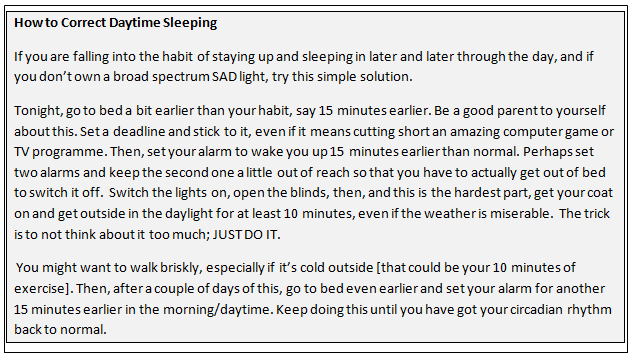
If you are reading this, then there is a good chance that you spend a fair bit of time on the internet; perhaps a bit too much time?
Time has become one of our most precious personal resources. It’s up there with health, love, intelligence, and beauty, and at least on par with money and possessions for many of us. It is a limited resource, but it can be budgeted in a way that is best for each individual. The way we like to spend our time is different for each of us and changes over our life cycle.
Technology Sucks Time
Technology has given us more time in some ways, by taking away the need to spend our days doing basic tasks. But technology equally eats up our time. How often do you find yourself staring at a screen, be it on a television, computer or mobile phone? Sure we are sometimes learning stuff, and sure it sometimes helps us to relax, but most of us do a bit too much screen watching and this can have a detrimental effect on our lives, relationships and health.
Balance Your Passion
Having a passion, something that you really love doing regularly, is a positive thing. Research shows that a having a passion tends to increase positive responses across a whole lot of parameters, including mental health and sense of well-being, physical health, cognitive ability, and success in work and relationships. BUT [and this bit is crucial] this is so only if the person engages in the passion in a balanced way.
If the passion is taking up excessive time and energy in the person’s life, then the indicators will tend to go totally the other way. By that I mean, if somebody has an obsessive passion that they engage in to the detriment of relationships, sleep, exercise or work, then they will tend to score low on parameters like mental health, happiness, cognitive functioning and physical health; not just lower than those with a balanced passion, but much lower than people with no passion. And that goes for people who are obsessively addicted to technology.
No Off-Switch
An adolescent client of mine recently and wisely pointed out that “kids don’t have an off-switch”; meaning that they can find it difficult to stop whatever they enjoying doing: be it playing computer games, watching TV, texting, talking with friends, social networking, listening to music, taking drugs and alcohol, or, of course, sleeping in. And because they demand more independence, and because their parents usually want to treat them in age appropriate ways, they often end up spending too much time staying up late at night, doing the stuff they enjoy doing.
The problem is that most adolescents have not yet adequately internalised their inner parent. They are very good at focusing on the moment, and unbothered in that moment by future negative consequences, such as feeling tired the next day. Their inner child wants to rebel against the restraints of their childhood and do what they have never been allowed to do in the past: stay up late and play.
But teenagers are not the only people who have not properly integrated their inner parent. Our society full of adults who are ruled by their inner child; who are obsessively addicted to staying up late, watching television, internet surfing, pornography searching, social networking, gambling, and gaming.
Addicted to Computer Games
Addiction to games is one of the significant growing problems of this century, and, like most behaviour addictions or compulsive behaviours, it indicates an ineffectual inner parent. Compulsive gamers can become focused on the instant gratification of the game. It feels good in that moment, and takes them away from the everyday stresses of life, but, ironically, their behaviour can actually increase the stresses they experience in other aspects of their lives. Addicted gamers might spend several hours a day [or night] playing online games, leaving little time for adequate work, study, exercise, sleep, nutrition, social interaction [outside the game, that is] and family. Their inner child is having fun, so does not want to stop.
The Effect on Relationships
Internet forums are full of complaints and cries for help from the frustrated partners [usually girlfriends and wives] of Gamers, and I have seen quite a few in my clinic over the years.
Partners frequently complain that the more they ask or demand that the Gamer stop playing, come to bed with them, spend more time with them, spend more time with the children, or simply get out in the sun, eat a proper meal or have a shower, the more likely the Gamer is to dig their heals in and refuse. Eventually partners leave, children are damaged, friends give up, bosses lose patience, and bodies turn to blubber.
How to Develop Your Inner Parent
The first step to getting your life in balance is to want to.
The next step is to develop your inner parent; the part of you who says, “I’m off to bed now, so that I can be really with it in the meeting tomorrow,” and who actually turns the computer off and goes to the bathroom and bed. Or, when the alarm goes in the morning, jumps out of bed an hour earlier than usual to meditate and exercise. The inner parent is much better at coping with delayed gratification than the inner child.
Remember that the inner parent and inner child are not enemies; they are batting for the same team. Try to get them to communicate, understand, and compromise, which means have fun and be a little naughty and light sometimes, but remember the adult needs to be in charge and have the final say.
The inner parent can use praise and even small rewards to encourage mature, balanced behaviour.
Like all children, our inner child thrives on structure and routine. A no-nonsense routine, with named time slots, can reduce the chances of the inner child trying to negotiate and bargain their way out of doing what’s good for them, provided that the routine and task goals are comfortably achievable.
Rebelling is Giving Away Your Power
Rebellion is another sign that your inner child is dominating. When you get the urge to rebel against the wishes of your partner or other loved one when they ask you to stop your behaviour, remember that they are truly concerned about you, and/or worried about the impact on them or others; they not just trying to wield their power for the sake of it. Also, every time you rebel, you are actually giving your personal power away, because you are limiting your choices and actions to those that contradict the person you are rebelling against.
Therapy Can Help
If you are really struggling to control your technology addictive behaviour, it might be helpful to book an appointment with a therapist. A bit of psychological tweaking can hlep you to strengthen your strategies and resolve, as well as clear any underlying problems that might be unconsciously fuelling your behaviour.
Balance
Remember, balance and moderation is the key. For many people this can mean breaking routine rules now and then for a treat, but for others any lapse in rules can lead to a major relapse in their addictive behaviour, so rules need to incorporate fun and balance. Each of us must determine the best way to manage our inner child, while keeping our inner parent firmly, but lovingly, in charge.


 In the winter months, many people risk becoming emotionally low, negative, and stressed. Their appetite for high calorie junk food might increase, their libido often goes out the window, and they might feel incredibly lethargic, finding it difficult to motivate themselves to exercise, leave home, or even get out of bed. Contradictorily, they may tend to stay up late or sleep badly.
In the winter months, many people risk becoming emotionally low, negative, and stressed. Their appetite for high calorie junk food might increase, their libido often goes out the window, and they might feel incredibly lethargic, finding it difficult to motivate themselves to exercise, leave home, or even get out of bed. Contradictorily, they may tend to stay up late or sleep badly.




